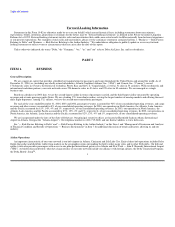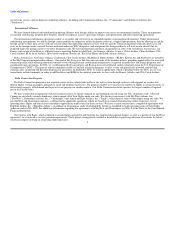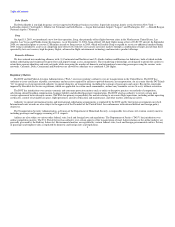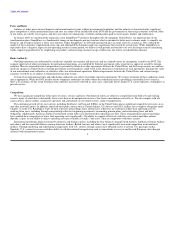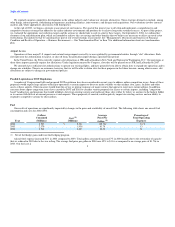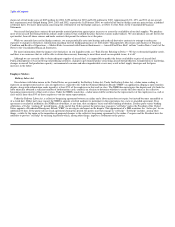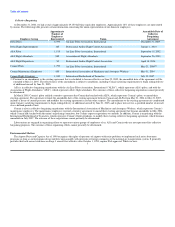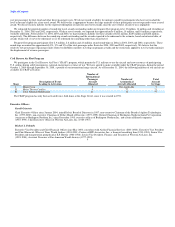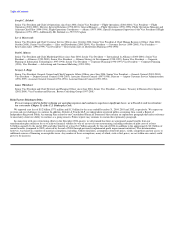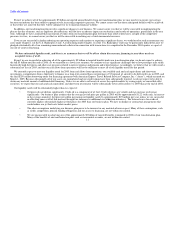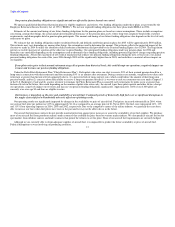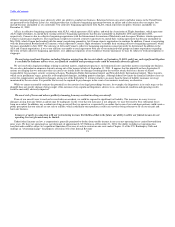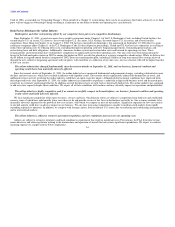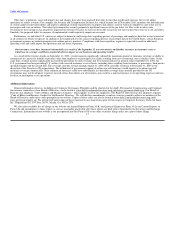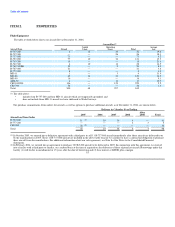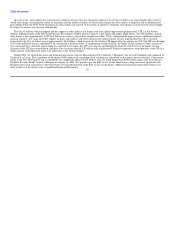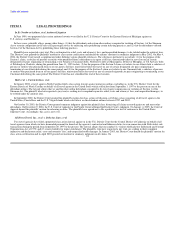Delta Airlines 2004 Annual Report Download - page 15
Download and view the complete annual report
Please find page 15 of the 2004 Delta Airlines annual report below. You can navigate through the pages in the report by either clicking on the pages listed below, or by using the keyword search tool below to find specific information within the annual report.
Table of Contents
Even if we achieve all of the approximately $5 billion in targeted annual benefits from our transformation plan, we may need even greater cost savings
because our industry has been subject to progressively increasing competitive pressure. We cannot assure you that these anticipated benefits will be achieved
or that if they are achieved that they will be adequate for us to maintain financial viability.
In addition, our transformation plan involves significant changes to our business. We cannot assure you that we will be successful in implementing the
plan or that key elements, such as employee job reductions, will not have an adverse impact on our business and results of operations, particularly in the near
term. Although we have assumed that incremental revenues from our transformation plan will more than offset related costs, in light of the competitive
pressures we face, we cannot assure you that we will be successful in realizing any of such incremental revenues.
If we are not successful in further reducing our operating expenses and continue to experience significant losses, we would need to seek to restructure our
costs under Chapter 11 of the U.S. Bankruptcy Code. A restructuring under Chapter 11 of the U.S. Bankruptcy Code may be particularly difficult because we
pledged substantially all of our remaining unencumbered collateral in connection with transactions we completed in the December 2004 quarter as a part of
our out-of-court restructuring.
We have substantial liquidity needs, and there is no assurance that we will be able to obtain the necessary financing to meet those needs on
acceptable terms, if at all.
Even if we are successful in achieving all of the approximately $5 billion in targeted benefits under our transformation plan, we do not expect to achieve
the full $5 billion until the end of 2006. As we transition to a lower cost structure, we continue to face significant challenges due to low passenger mile yields,
historically high fuel prices and other cost pressures related to interest expense and pension and related expense. Accordingly, we believe that we will record a
substantial net loss in 2005, and that our cash flows from operations will not be sufficient to meet all of our liquidity needs for that period.
We currently expect to meet our liquidity needs for 2005 from cash flows from operations, our available cash and cash equivalents and short-term
investments, commitments from a third party to finance on a long-term secured basis our purchase of 32 regional jet aircraft to be delivered to us in 2005, and
the final $250 million borrowing under our financing agreement with American Express Travel Related Services Company, Inc. ("Amex"), which occurred on
March 1, 2005. Because substantially all of our assets are encumbered and our credit ratings have been substantially lowered, we do not expect to be able to
obtain any material amount of additional debt financing. Unless we are able to sell assets or access the capital markets by issuing equity or convertible debt
securities, we expect that our cash and cash equivalents and short-term investments will be substantially lower at December 31, 2005 than at the end of 2004.
Our liquidity needs will be substantially higher than we expect if:
• Oil prices do not decline significantly. Crude oil is a component of jet fuel. Crude oil prices are volatile and may increase or decrease
significantly. Our business plan assumes that the average jet fuel price per gallon in 2005 will be approximately $1.22 (with each 1¢ increase
in the average annual jet fuel price per gallon increasing our liquidity needs by approximately $25 million per year, unless we are successful
in offsetting some or all of this increase through fare increases or additional cost reduction initiatives). The forward curve for crude oil
currently implies substantially higher jet fuel prices for 2005 than our business plan. We have no hedges or contractual arrangements that
would reduce our jet fuel costs below market prices.
• The other assumptions underlying our business plan prove to be incorrect in any material adverse respect. Many of these assumptions, such
as yields, competition, pension funding obligations and our access to financing, are not within our control.
• We are unsuccessful in achieving any of the approximately $5 billion of targeted benefits (compared to 2002) of our transformation plan.
Many of the benefits of our transformation plan, such as incremental revenues, are not within our control.
11


